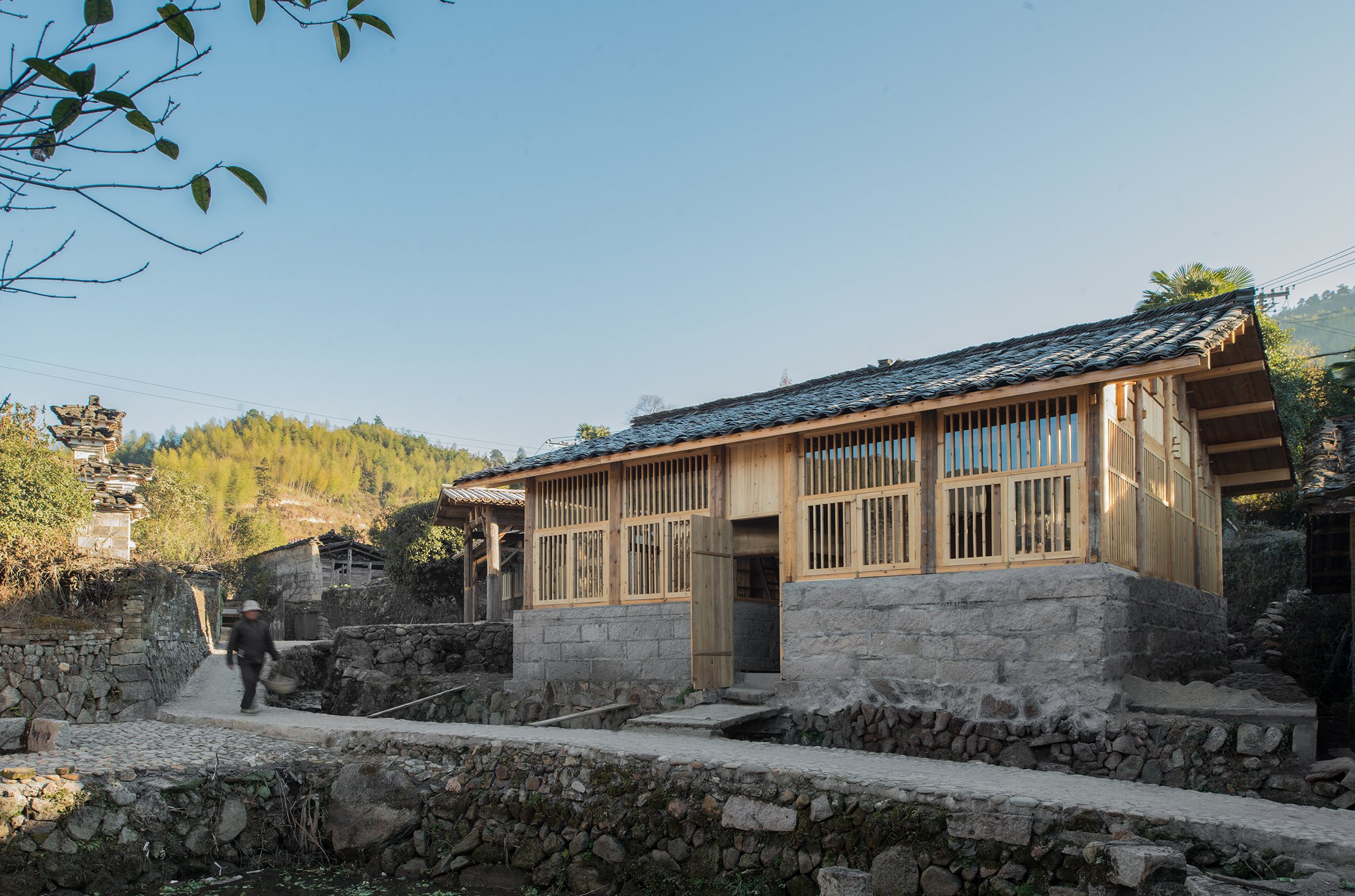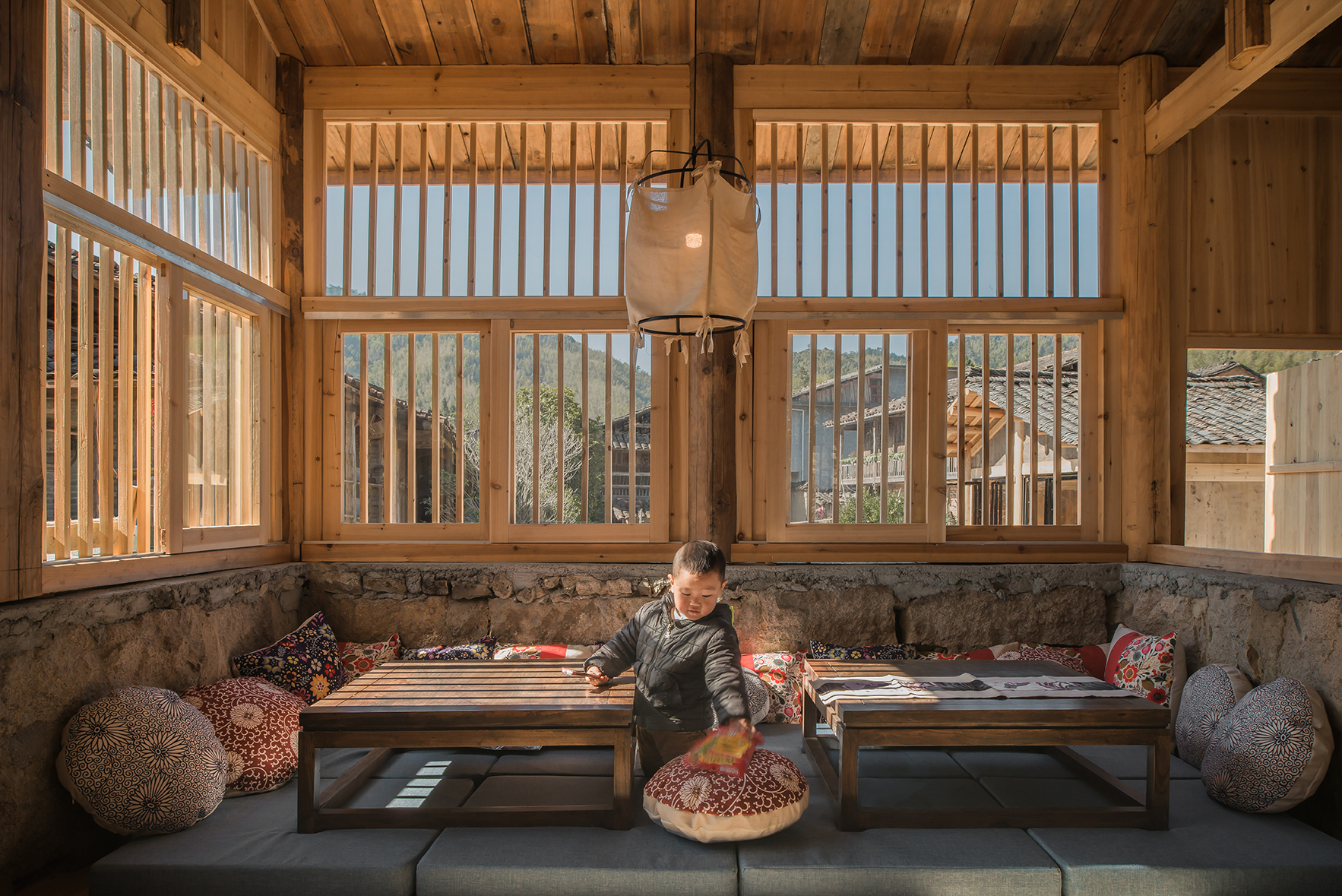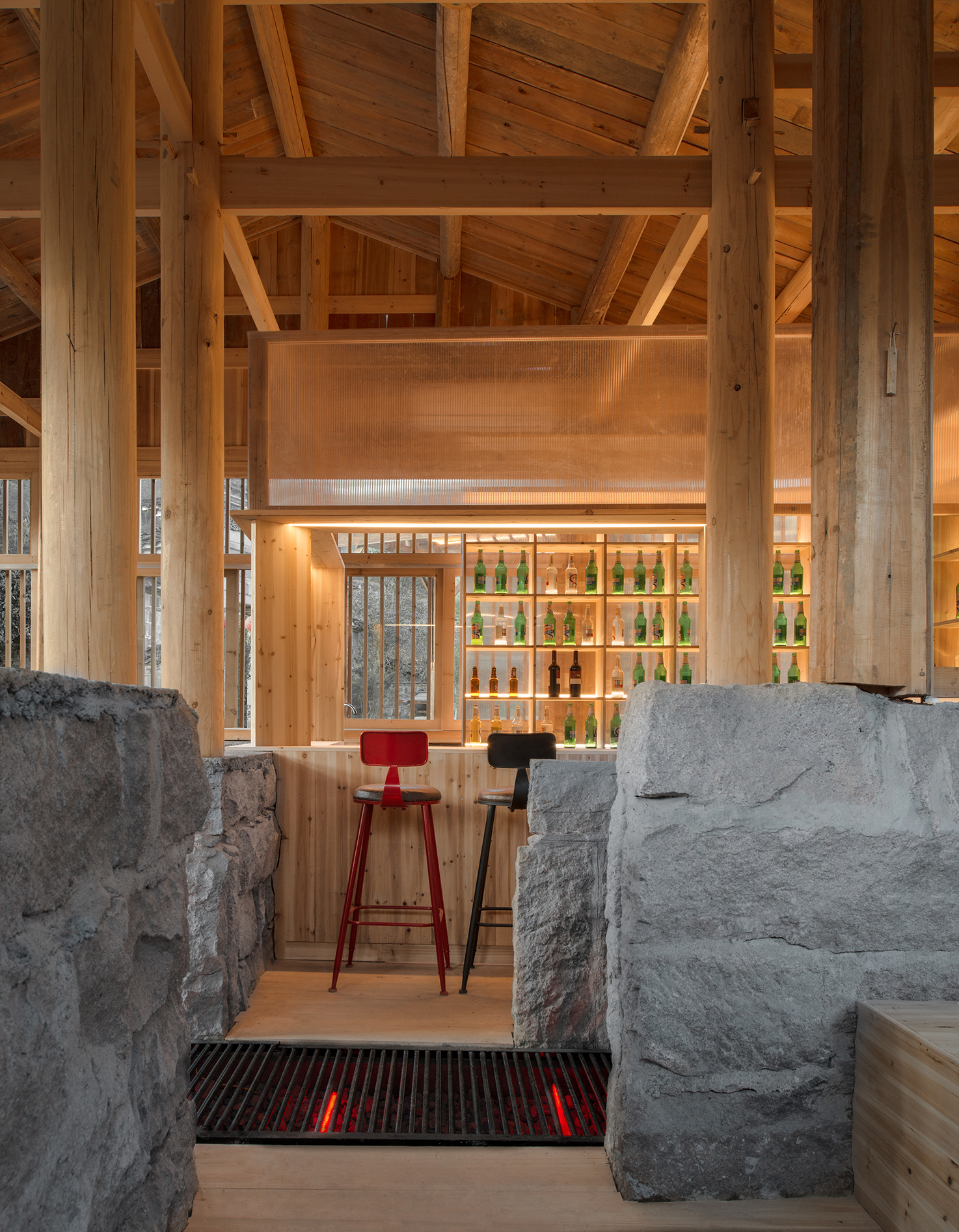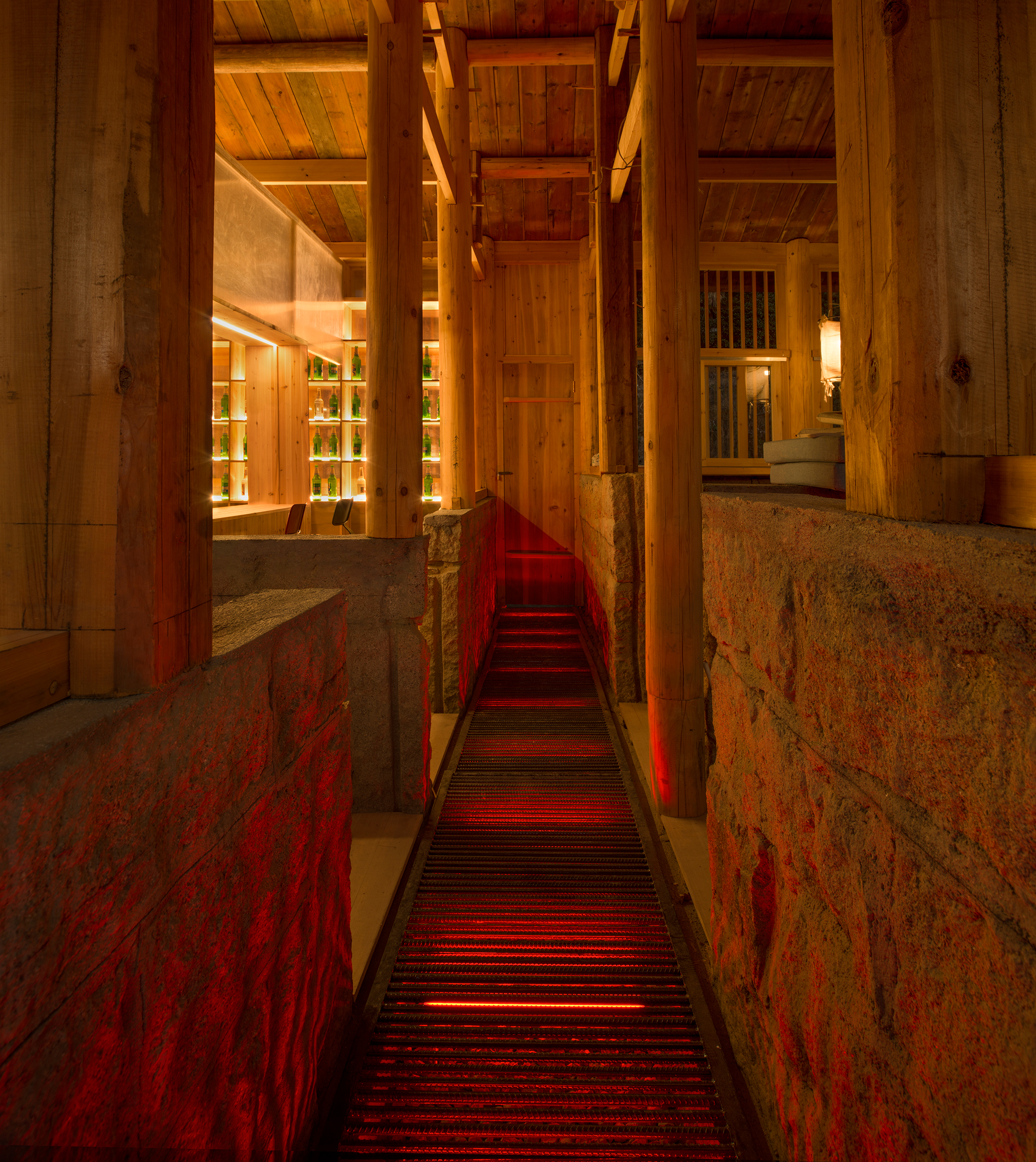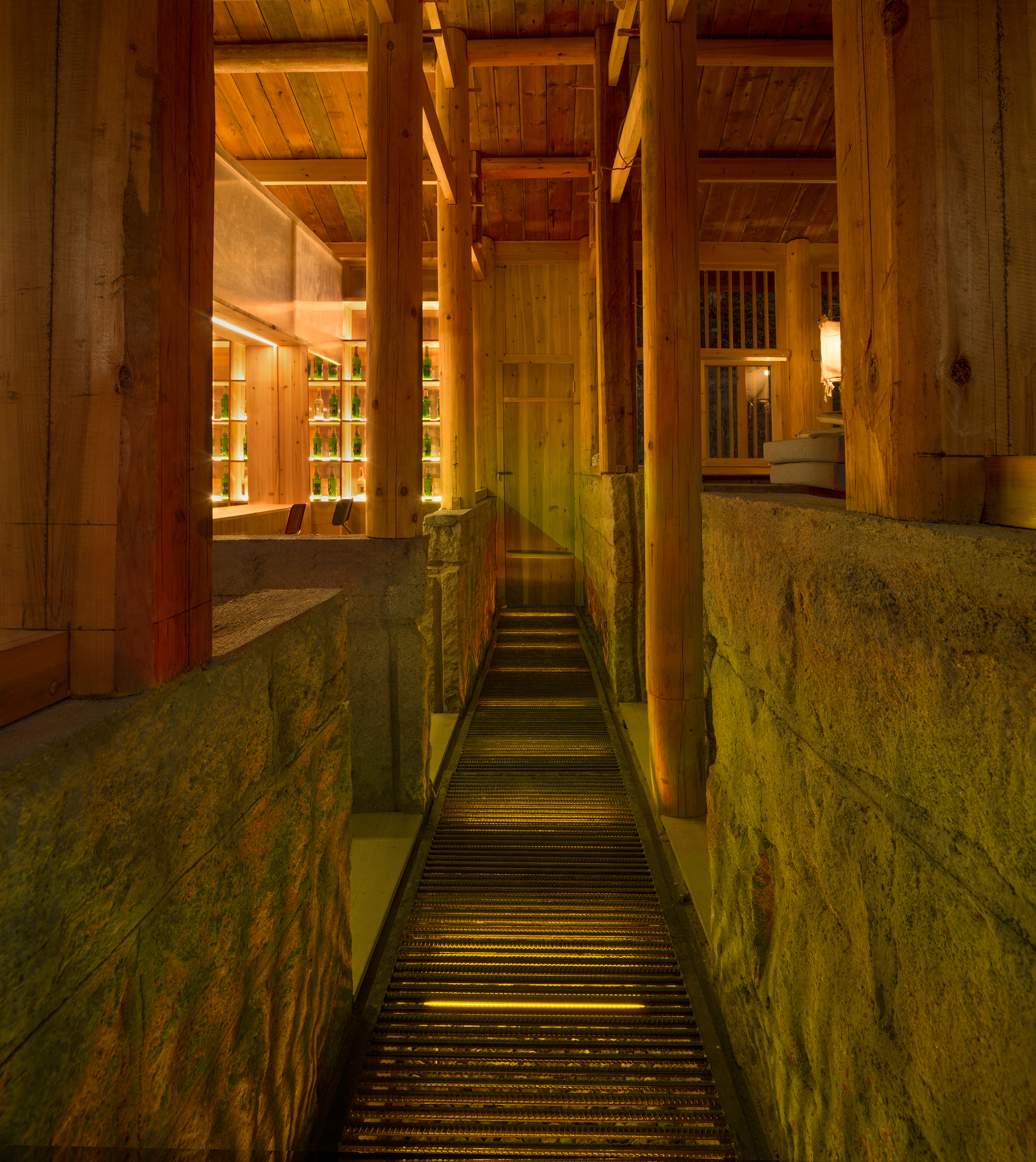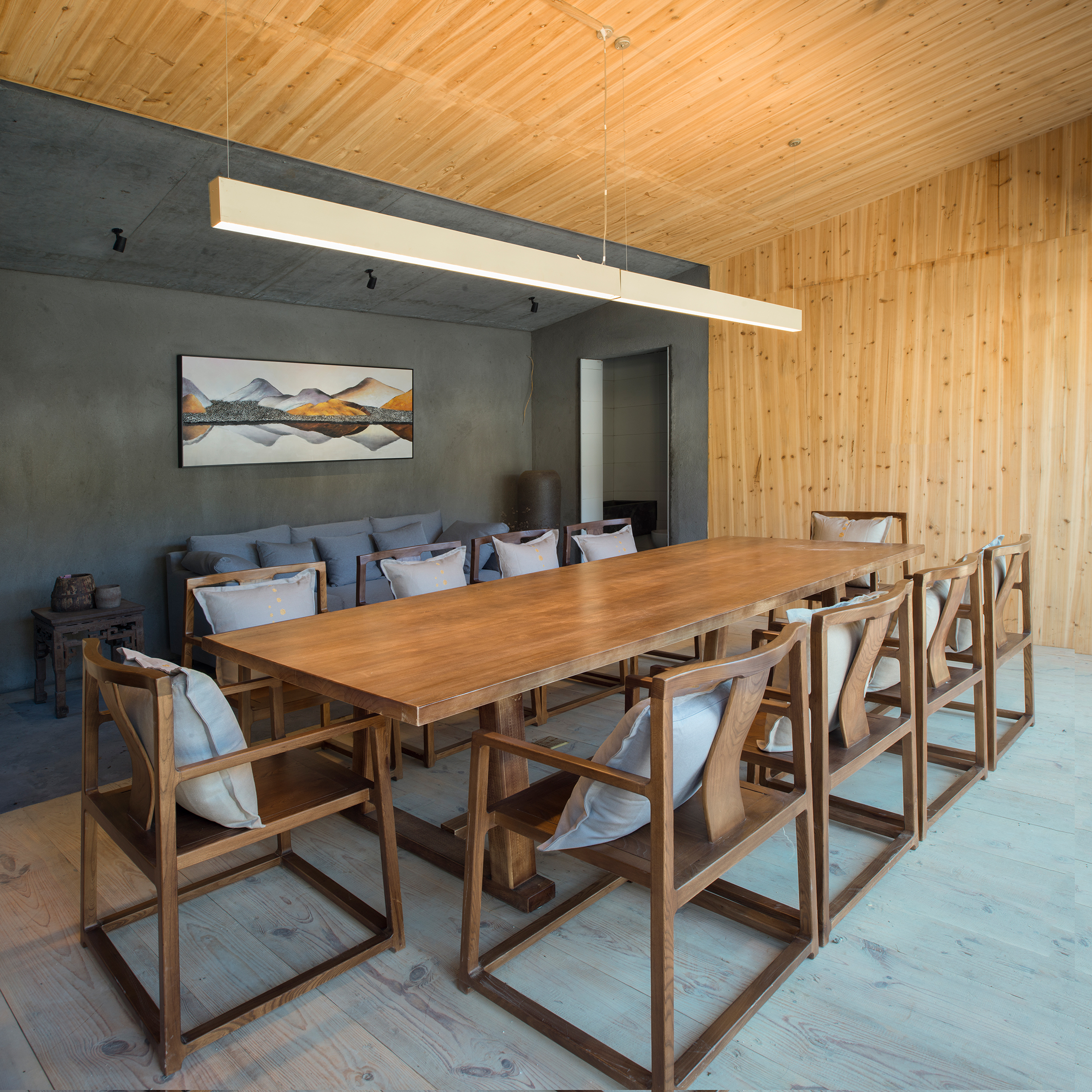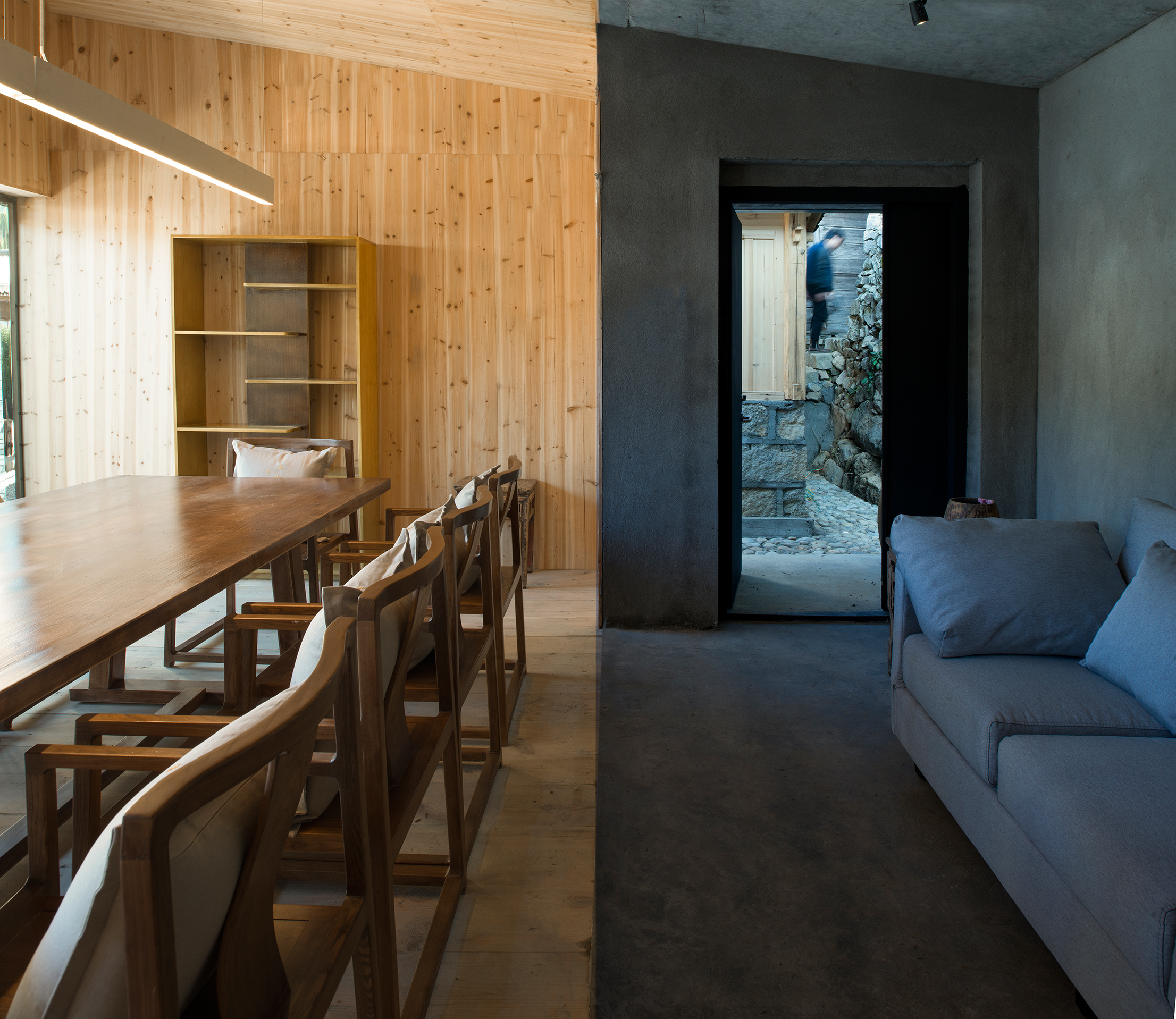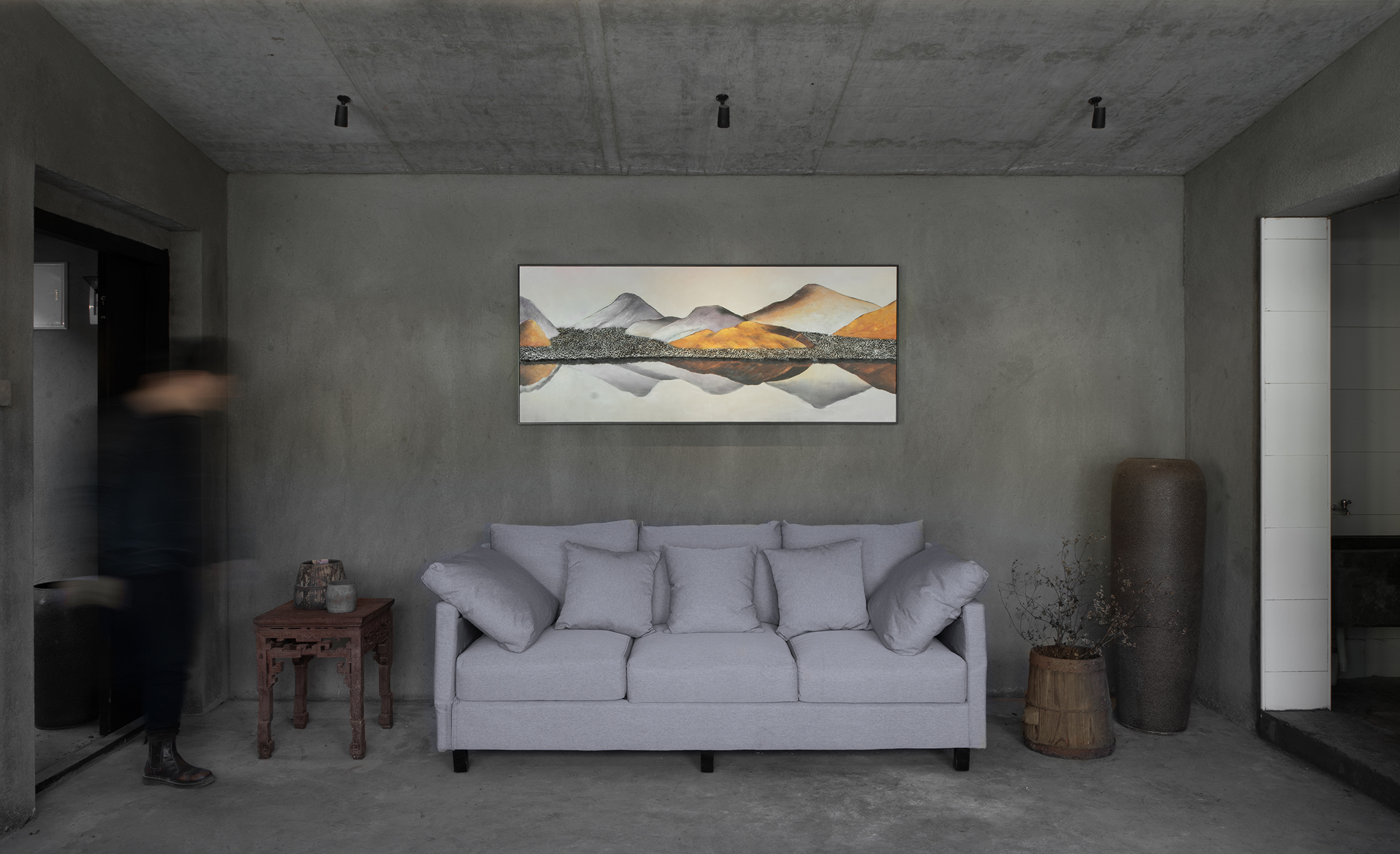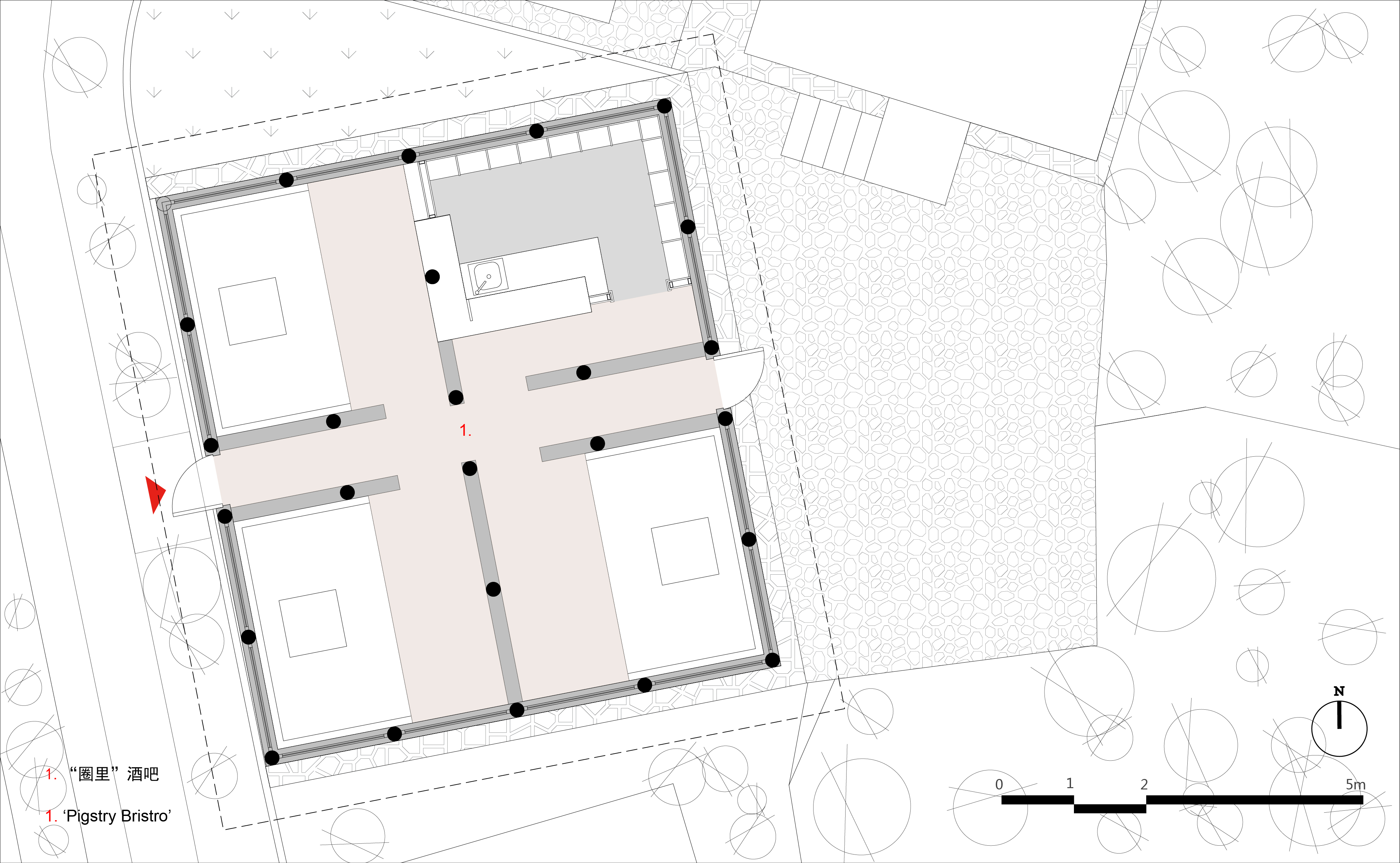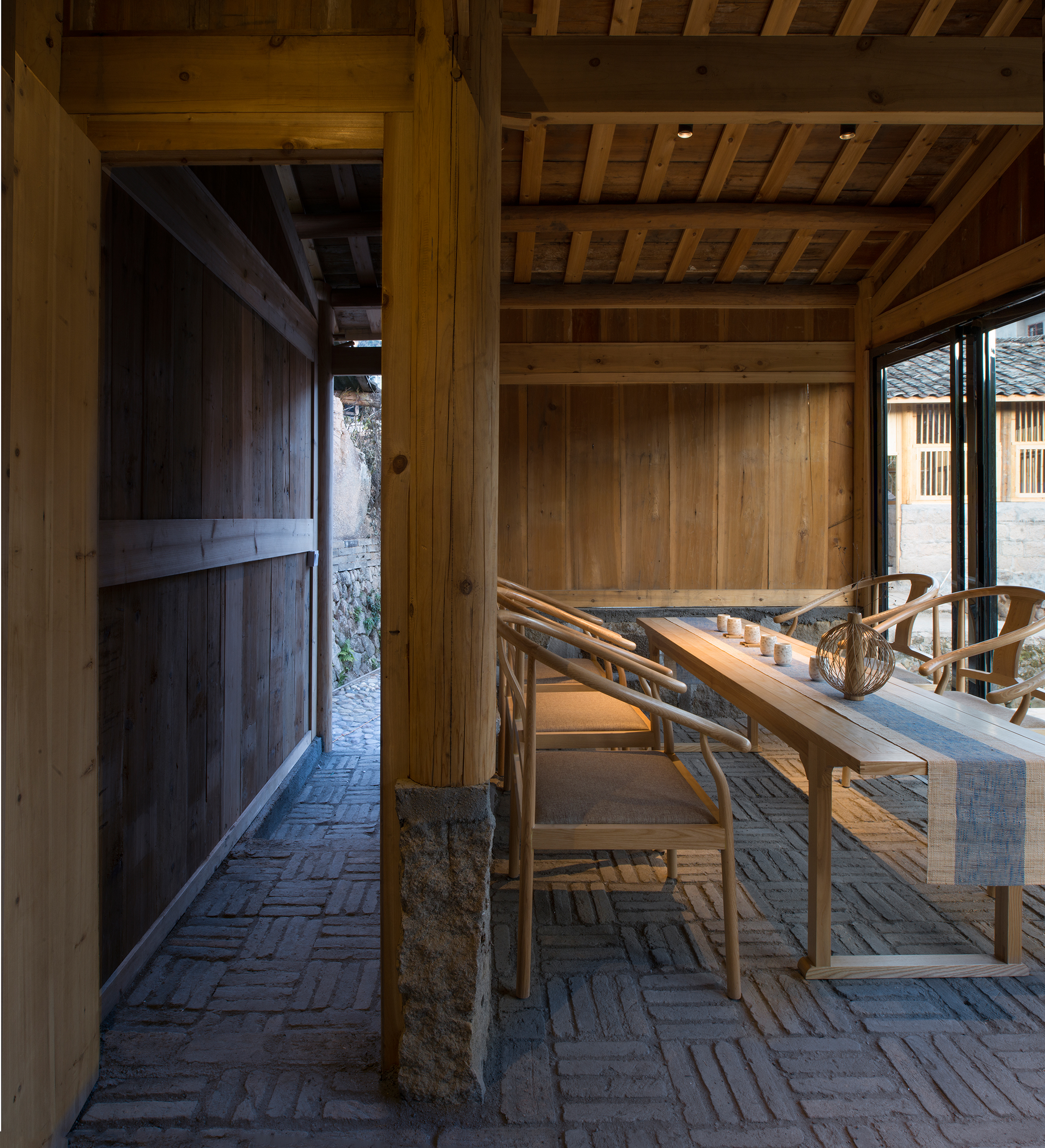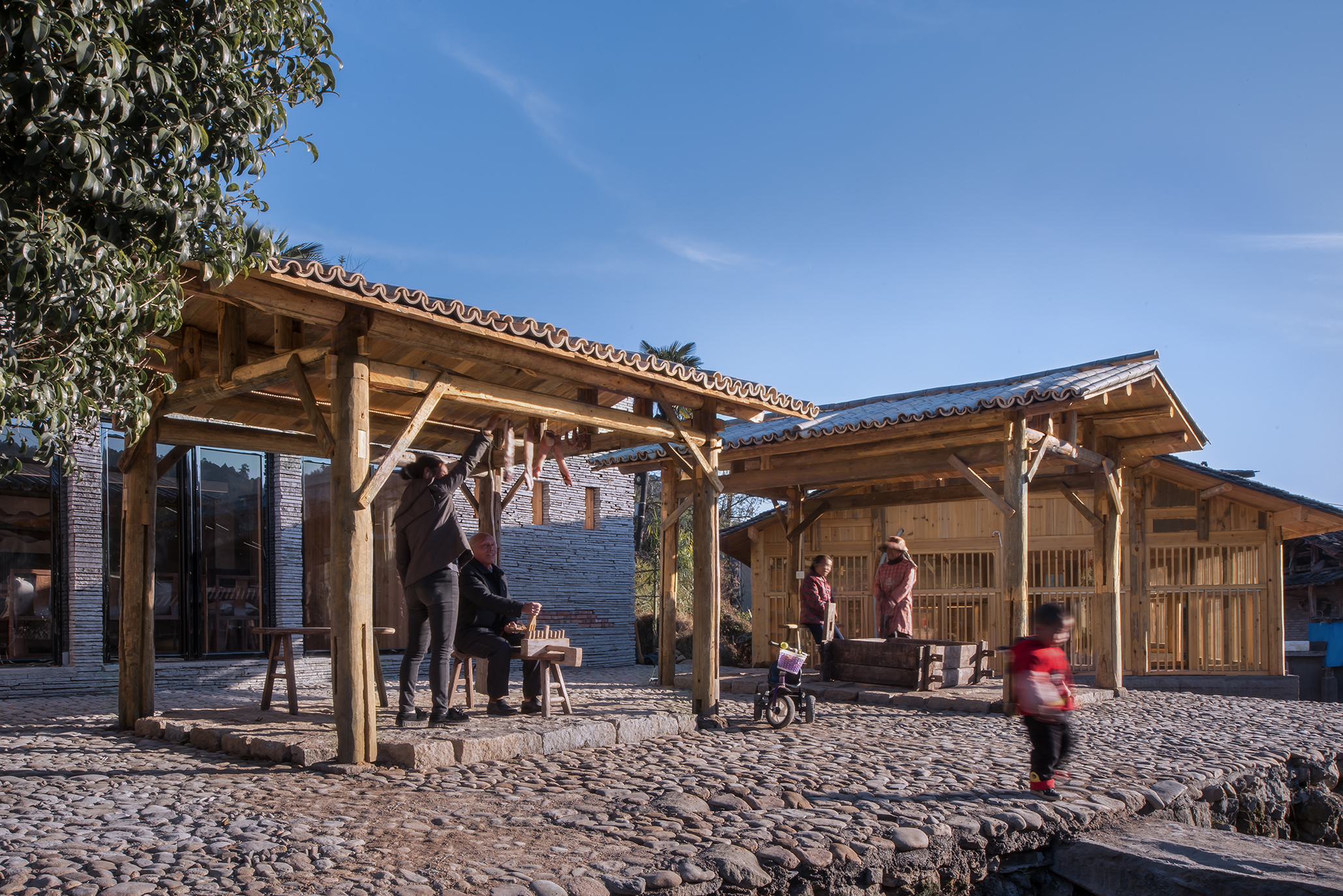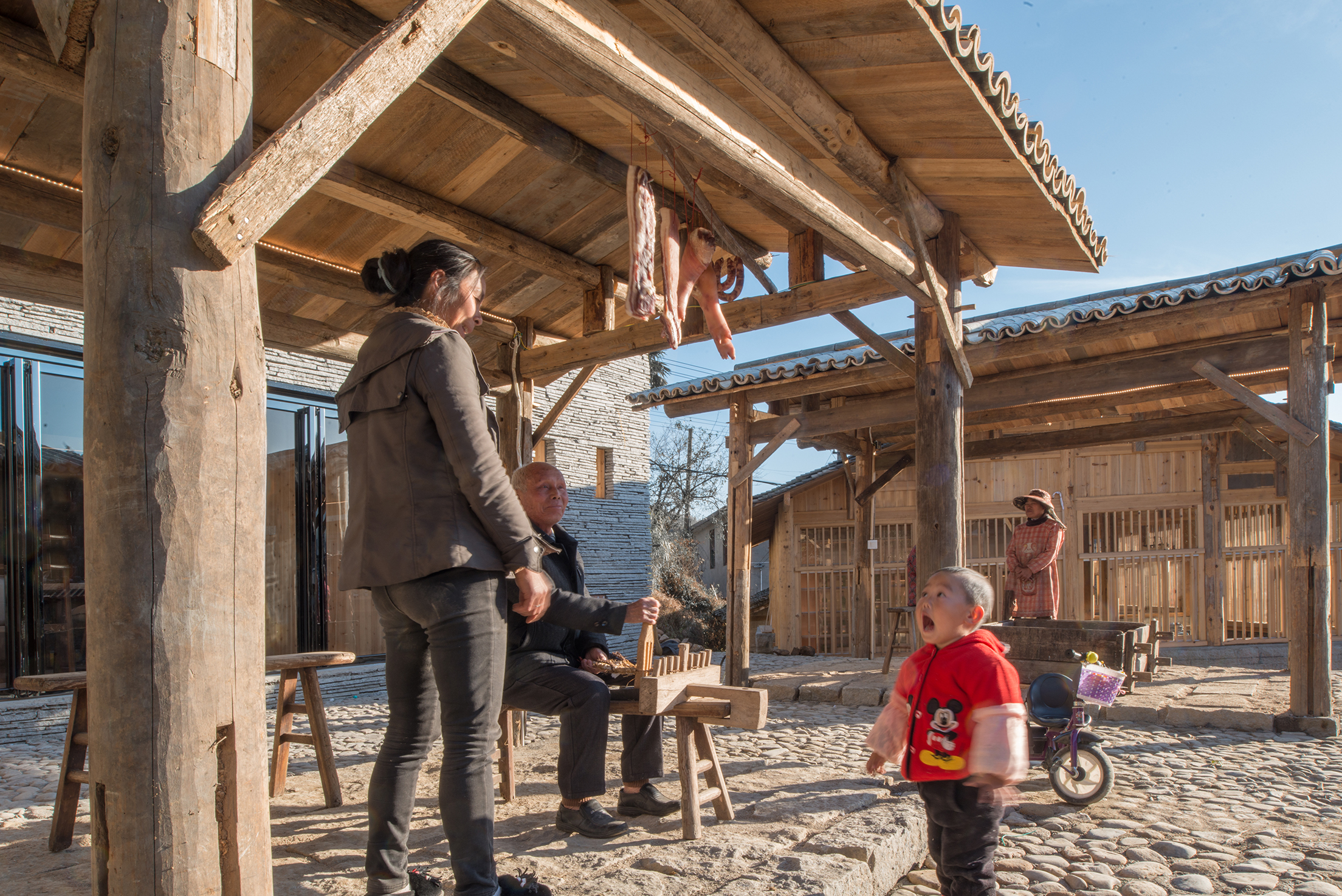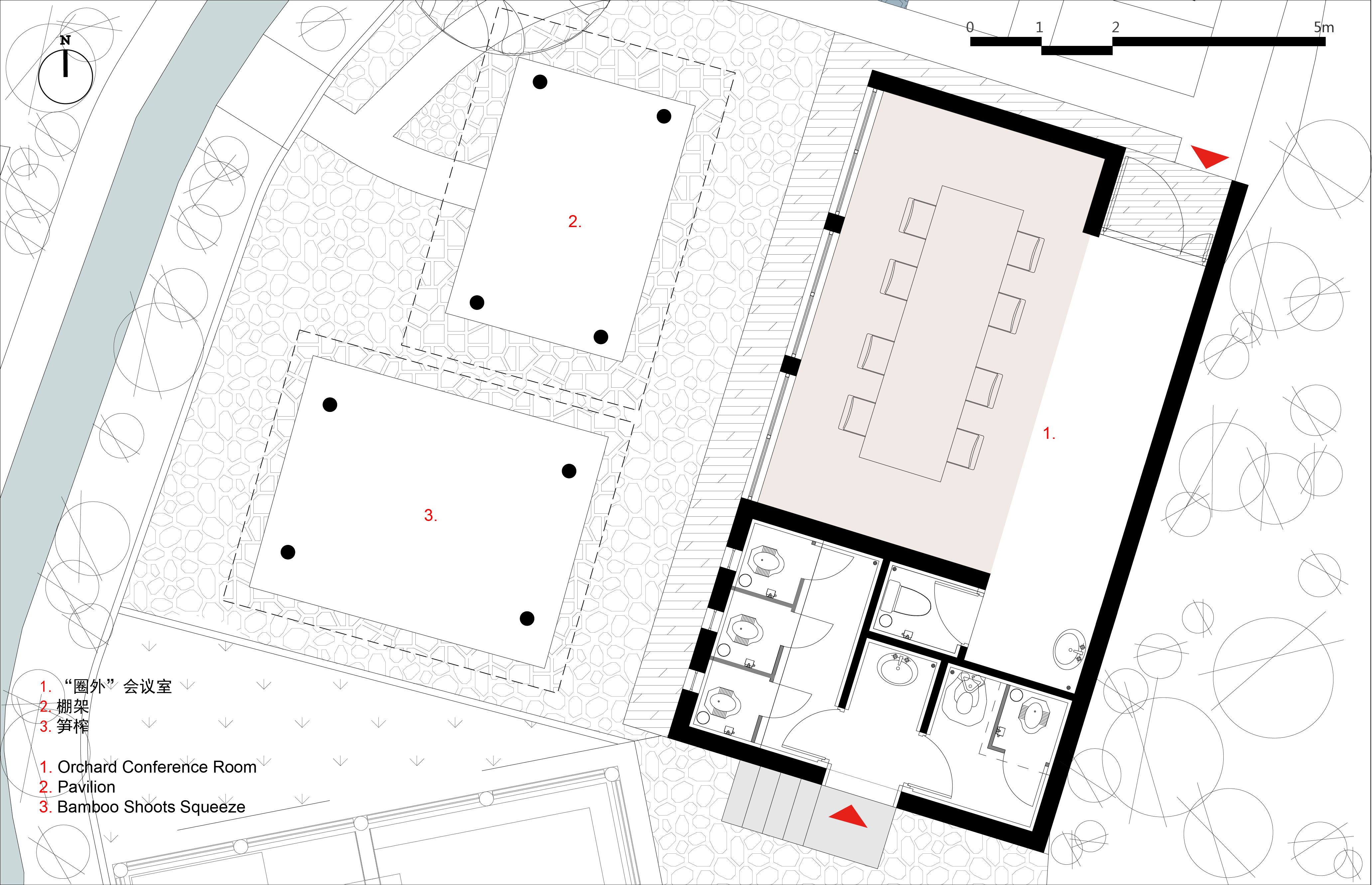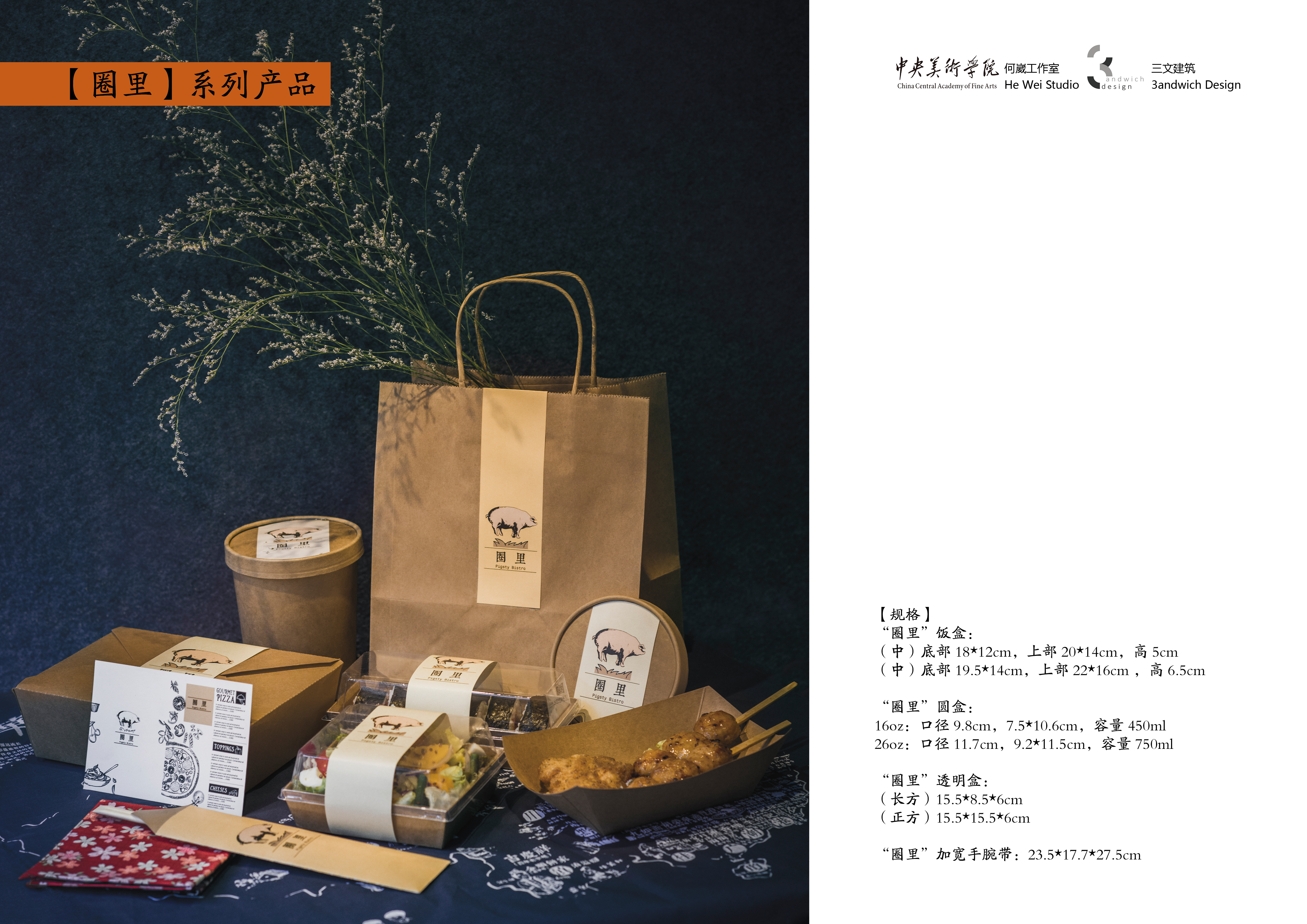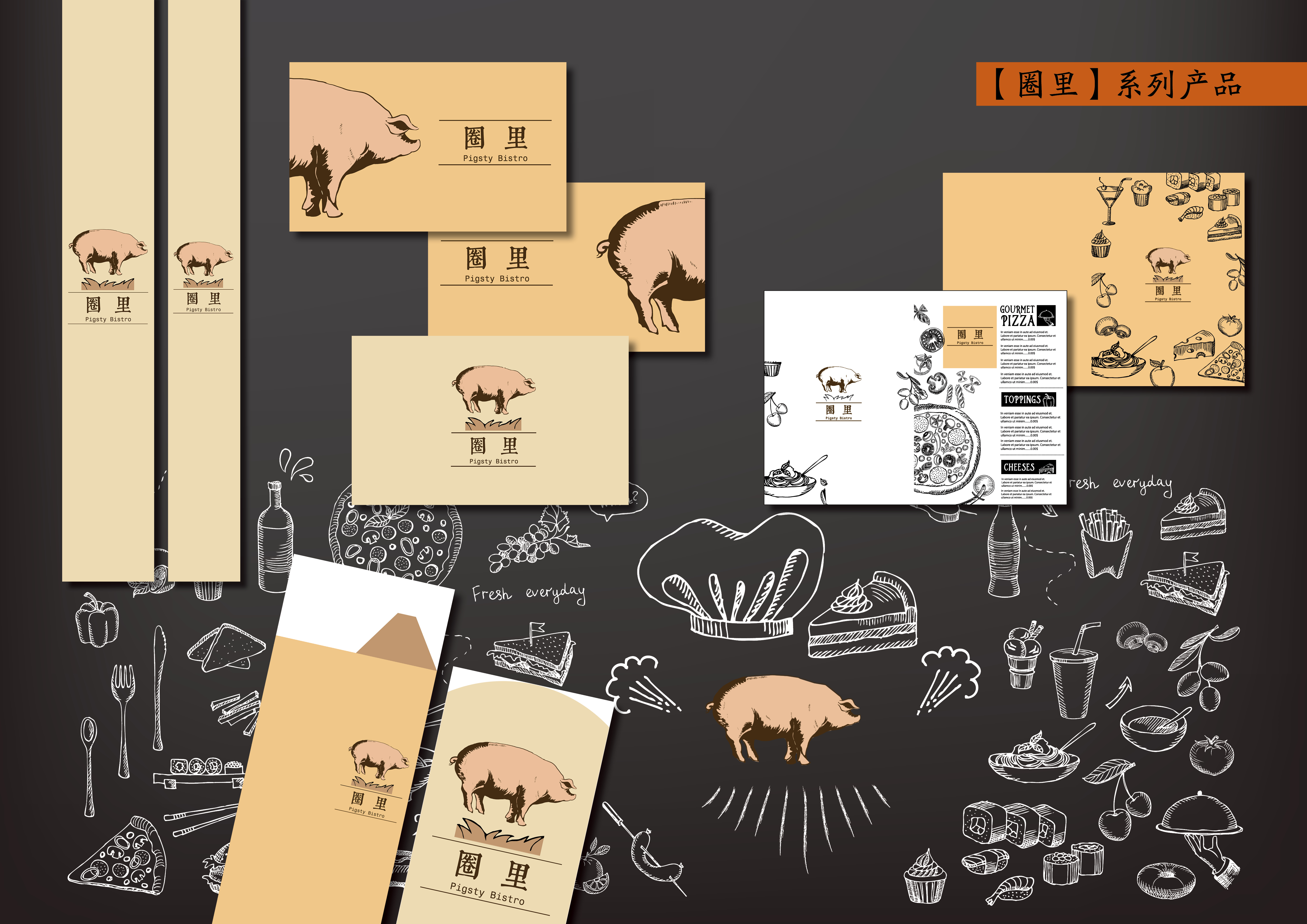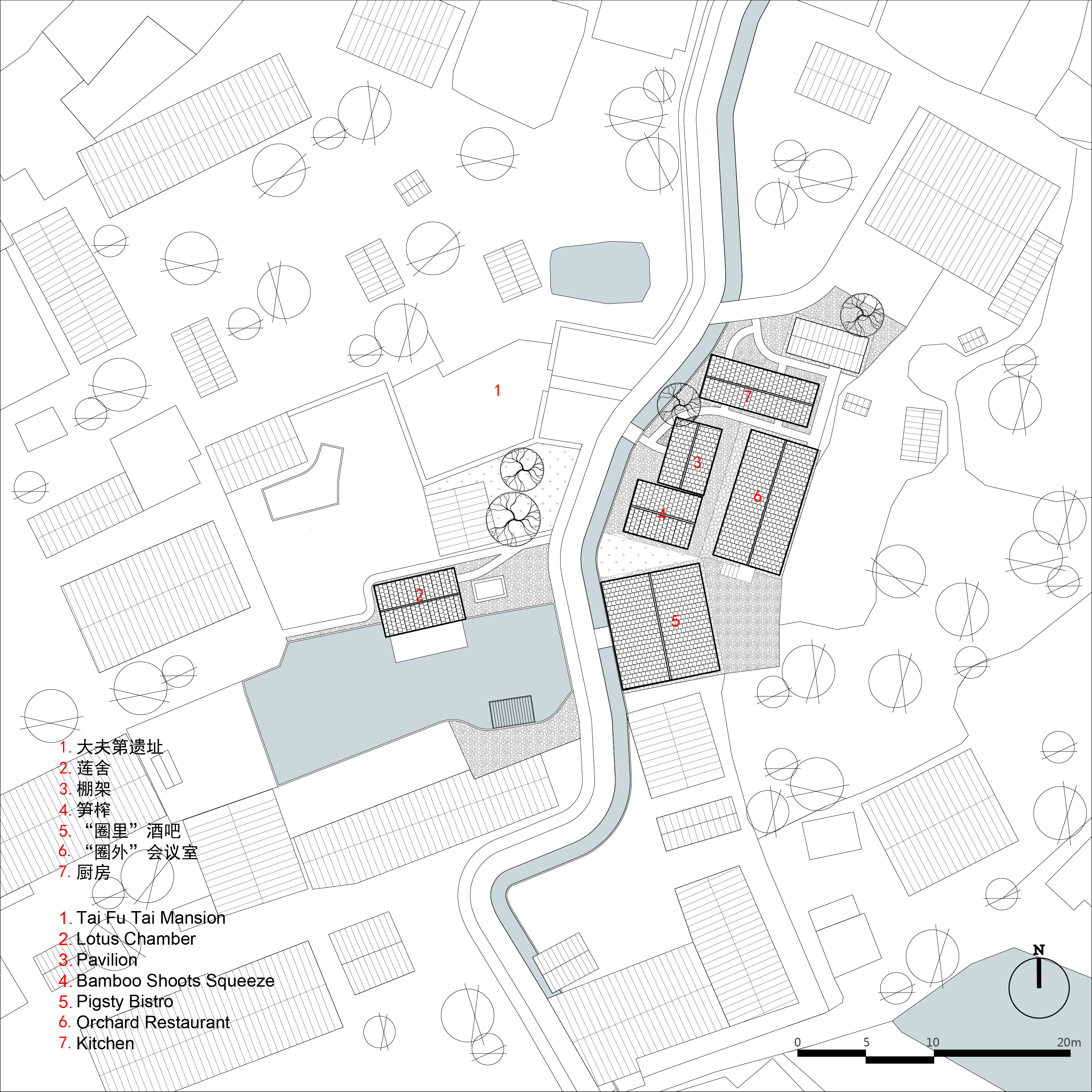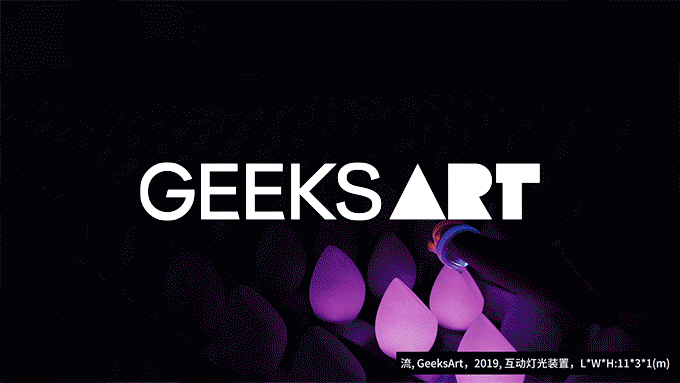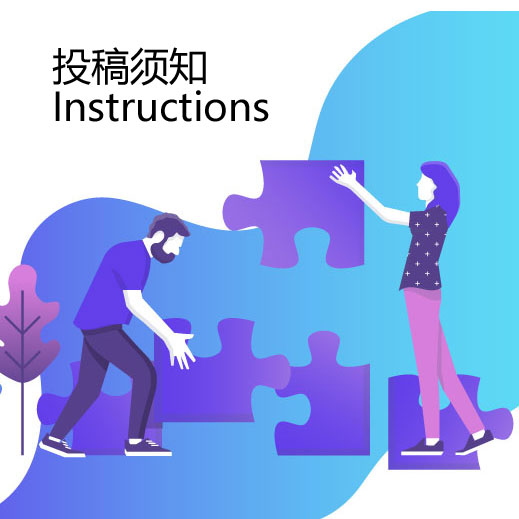上坪古村复兴计划中最后一个设计区域位于村落较深的位置,是贯穿村落的两条溪流中东溪上游的重要节点。这里最重要的标志是名为“大夫第”的宅子,相传这里的主人曾在外面做官,回乡后在故里建造了这座大宅。大宅的口楼还保存完好,但里面的主体建筑已经因为早年间的一场大火被焚毁,甚是可惜。设计区域内原有文化元素、景观元素丰富:水塘、古井、笋榨、大夫第门楼、古戏台遗址等;同时,也存在若干闲置的构筑物,如猪圈、杂物棚等。有趣的是,猪圈和杂物棚的位置极为显眼,占据了场地中视觉和景观的焦点位置。这种现象在古村落中常有发生,也为村庄的改造,新业态的植入提供了有利的条件。
The last design area of the Shang Ping Village Regeneration is somewhere hidden inside the village. It locates on the east stream. According to the legend, a giant house named ‘Tai Fu Tai Mansion’ at here was built by a famous government officer after retirement. The gate tower is well preserved but the main building was destroyed by a fire many years ago, which is quite regretful. The original cultural elements and landscape like pond, ancient wells, bamboo shoots squeeze, gateway and the ancient stage ruins are utilized by designers for the regeneration. Some unused structures such as pigsty and shed are obvious on site, which is remained to be major landscape elements. Actually, these existing structures become great resources for new types of business as well as village revival.
独特的位置和文化、景观条件决定了这里必然会成为人群聚集的地点,而正如上坪村普遍存在的问题一样,缺少休憩、餐饮等旅游配套设施严重影响了村庄旅游,及相关产业的发展,也进而不利于村庄经济的复苏。针对这个问题,设计团队希望通过对闲置农业生产设施的改造,植入新的业态,留住人流;与空间改造同步,一系列与古村相关的文创产品和旅游活动内容也被一起考虑。在设计团队看来,乡村振兴本就不只限于空间的改变,更应该涉及经营和产业。
Special location and culture of Tai Fu Tai mansion make it a great attraction for tourists. However, lack of public realms like restaurants and visitors’ center impact the tourism industry and local economy. The design team renovated unused spaces by plugging in new programs, transforming pervious production spaces into cultural/commercial use. A series of cultural products and activities attached to these spaces also have a strong appeal to travelers. It makes more sense to combine cultural industry and spatial design together for rural renovation.
圈里和圈外 ‘Pigsty Bistro’ and ‘Orchard Conference Room’
由废弃猪圈改造的酒吧:“圈里”是区域内最主要的新建筑。建筑的外观并不张扬,尽量保留了原有建筑的材质和形制:毛石围挡和木构屋架。在内部,建筑的平面成田字形,田字的四个区域是原来的猪圈,设计保留了原有猪圈的毛石围墙,将吧台、散座和炕席分别置于四个原本的猪圈中。
From a deserted pigsty to a bar: ‘Pigsty Bistro’ is a major new building in this area. The exterior of the building is not aggressive by keeping previous materials: rubbles and wooden roof. The floor plan is divided into four part for raising pigs. Each square is infilled with new bar, coffee table and Kang table (a heatable brick bed).
慵懒、戏剧性是酒吧“圈里”希望传达的气氛,撞色和碎花的靠枕、炕桌、石槽,由钢筋条焊成的走廊地面,配以可变色的LED地灯……设计师希望在古村中创造一个“异类”,它可以服务到村里来的年轻人群体,增加上坪旅游的丰富度。
The design would like to create a cosy and dramatic atmosphere by placing colorful floral pillows, Kang table, pigsty feeding,rebar decorated floor and color variable LED lights, etc. Some of these ‘Exotic’ stuffs makes it more interesting for visiting, especially for youngsters.
在圈里酒吧的旁边,新建了一座小型会议室。建筑成单坡顶,朝向大夫第门楼的一面使用了落地的大玻璃,与大夫第门楼,以及两者之间的戏台形成了很好的对视关系。因为和圈里酒吧相邻,设计师将之取名为:圈外。会议室和酒吧分别服务不同的人群,但都从不同的角度补充了古村对外服务不足的问题。
A small meeting room next to ‘Pigsty Bistro’ has tilted roof, with a full-height glass window facing to Tai Fu Tai Mansion and its stage. It’s called ‘Orchard Conference’ . Together with the Pigsty Bistro, Orchard Conference provide services for all users.
▲圈里酒吧平面图
莲舍 Lotus Chamber
莲舍是杂物间改造的茶室,也暗示了“廉洁”之意。原本的杂物间位于大夫第旁边的一个水塘边,水塘的存在使杂物间成为区域内最显眼的视觉焦点。设计保留了原有建筑的毛石围挡,只对上层的木结构进行了整修,将之改造为一个水边的茶室。原有的老木材被尽量保留下来,重复使用;在朝向水面的一面,落地门窗和架在水上的平台加强了建筑与水景的关系,也给新的使用者一个临水而居的感觉。水塘内的景观也被重新梳理,原本半闲置的状态被新的景观元素——荷花所替代,从而与新改造的茶室向呼应。
Lotus Chamber is a teahouse transformed from a old utility room. It represents ‘Being Incorruptness’ for having the same pronunciation with integrity in Chinese. This building is the most obvious one by the pond next to Tai Fu Tai Mansion. The design kept old rubble wall and only fixed non-recyclable wood structure on the upper level, then making it a teahouse by water. Users can walk through a glass door, stand on the platform and enjoy spaces over the pond with lotus, referring back to the name ‘Lotus Chamber’.
▲莲舍平面图
戏台和笋榨 Pavilion and Bamboo Shoots Squeeze
在大夫第门楼、圈里酒吧和圈外会议室之间,原场地中有两处棚架,它们原来的用途是用于榨笋,制作笋干。设计师认为它们的存在很好的诠释了乡村的气氛,于是棚架被保留下来,适当的进行整修,但力求保持一种搭建的随意性。安放笋榨的棚架仍然作为制笋的空间(遗憾的是原来的笋榨农民不肯留下,只能从别处移来另一架笋榨),在清明前后,它仍然可以进行生产,同时也为村庄的旅游提供了一种体验活动。另一座棚架的用途进行了调整,平时它可以作为一个凉亭被使用;在特点时间,它又会变身为乡村传统戏剧的表演舞台,而此时周边的建筑窗口则成为观赏表演的最佳位置。
Between Tai Fu Tai Mansion, Bistro and conference room, structures for bamboo shoot s squeeze (for making dried bamboo shoot) were kept and renovated to become a great installation. One of it could still be used for producing dried bamboo shoots. When Qingming Festival comes each year, visitors could also experience making bamboo squeeze by themselves, which becomes a great interaction on site. Another one is renovated to be a pavilion. Whenever there are show playing underneath, audience could see through windows nearby.
▲圈外与笋榨平面图
文创产品 Cultural Products
与上坪古村其他两个节点一样,设计团队也为大夫第节点设计了专属的文创产品。除了特别为上坪莲子、笋干设计的包装外,一个由“圈里”酒吧衍生出来的以“猪”为主题的系列产品显得尤为突出。猪在中国传统中是富足的象征,在汉字中“家”字下面的“豕”字就是猪的意思,在西方文化猪也有吉祥、幸运的意思。设计师以猪为造型设计了一组产品,包括:丝巾、杯垫、明信片等等,它们一方面对应建筑的原始用途,另一方面又增加了趣味性。
As what have been done for other spots, design team also developed a series of cultural product for Tai Fu Tai Mansion. Besides the package design for Shang Ping lotus nuts and dried bamboo shoots, products with the theme of ‘pig’ for ‘Pigsty Bistro’ are also well designed. Pig represents affluence in China and also means lucky in western culture. In Chinese character, ‘family’ is composed with a ‘roof’ and a ‘pig’, which means praying underneath the roof makes a family complete. Using pig as the prototype of cultural products like scarves, coasters and post cards is to maintain the original taste of the rural buildings, thus making it an interesting project.
▲总平面图
项目信息——
项目名称:上坪古村复兴计划之大夫第篇
项目地点:福建省三明市建宁县溪源乡
业主:溪源乡人民政府
主持建筑师:何崴
建筑设计团队:赵卓然、李强、陈龙、陈煌杰、汪令哲、赵桐、叶玉欣、宋珂
设计面积:151平方米
设计时间:2016年8月-2016年11月
建造时间:2016年11月-2017年12月
照明设计:清华大学建筑学院张昕工作室
照明设计团队:张昕、韩晓伟、周轩宇、牛本田
室内施工图设计:北京鸿尚国际设计有限公司
摄影:周梦
Project Information——
Project Name: Shangping Village Regeneration – Tai Fu Tai Mansion Area
Location: Xiyuan Town, Jianning County, Sanming City, Fujian Province, China
Client: People’s Government of Xiyuan Township
Architectural Design Company: 3andwich Design / He Wei Studio
Principal Architect: He Wei
Architectural Design Team: Zhao Zhuoran, Li Qiang, Chen Long, Chen Huangjie, Wang Lingzhe, Zhao Tong, Ye Yuxin, Song Ke
Building area: 151 sqm
Period of Design: Aug 2016 – Nov 2016
Period of Construction: Nov 2016 – Dec 2017
Lighting Design: Zhang Xin Studio, Tsinghua University School of Architecture
Lighting Design Team: Zhang Xin, Han Xiaowei, Zhou Xuanyu, Niu Bentian
Interior Construction Drawing: Hongshang Design
Photographer: Zhou Meng


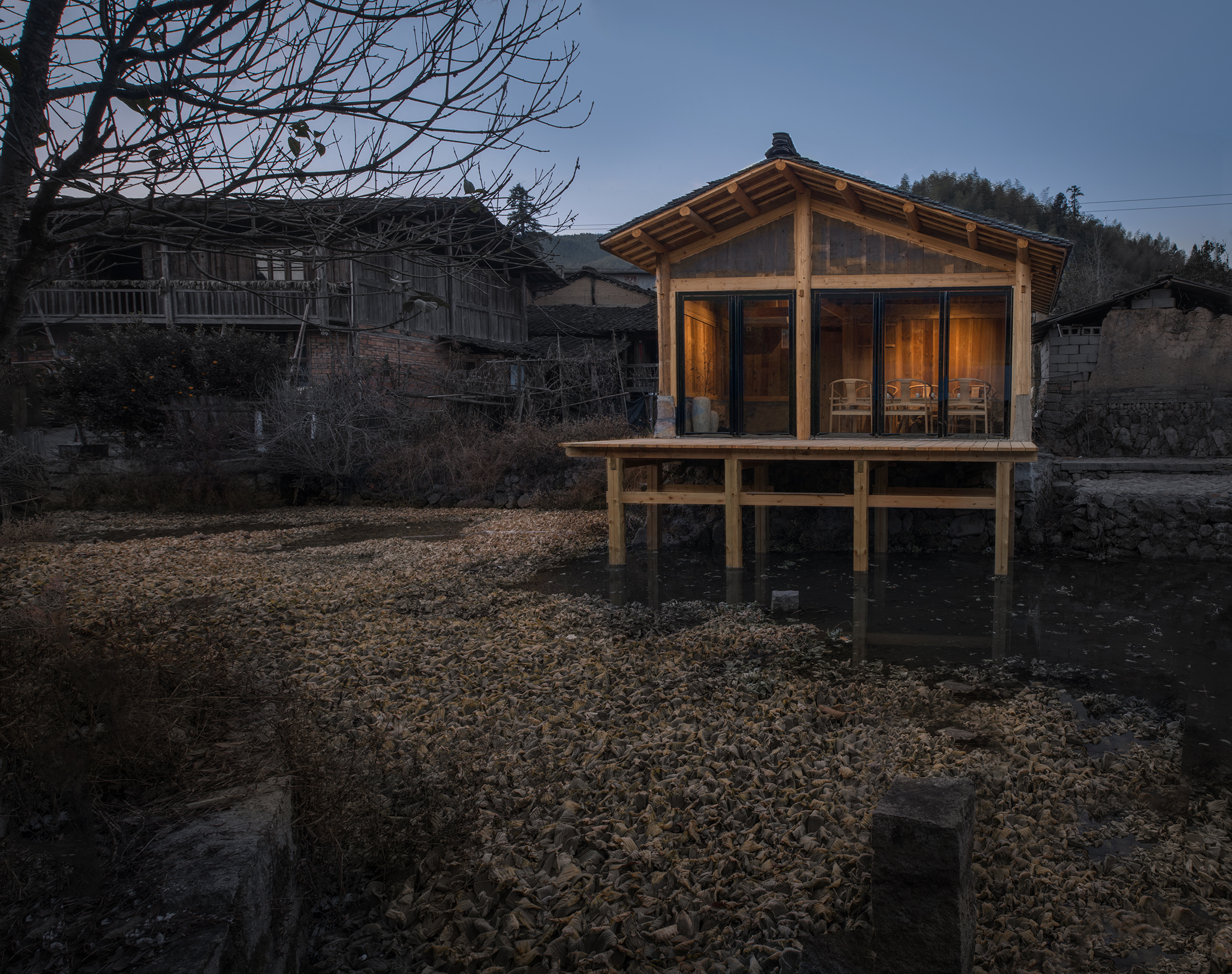
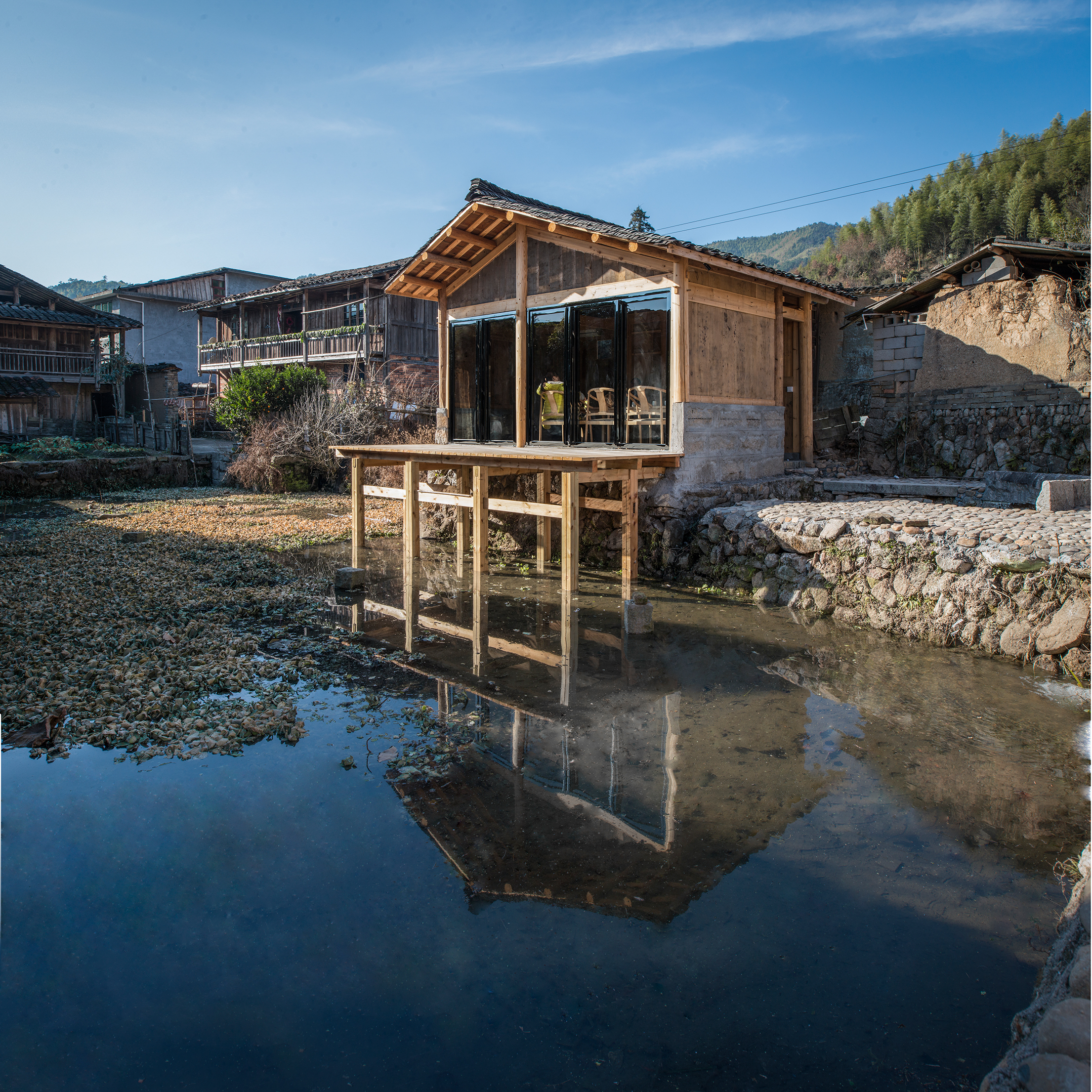
.jpg)

